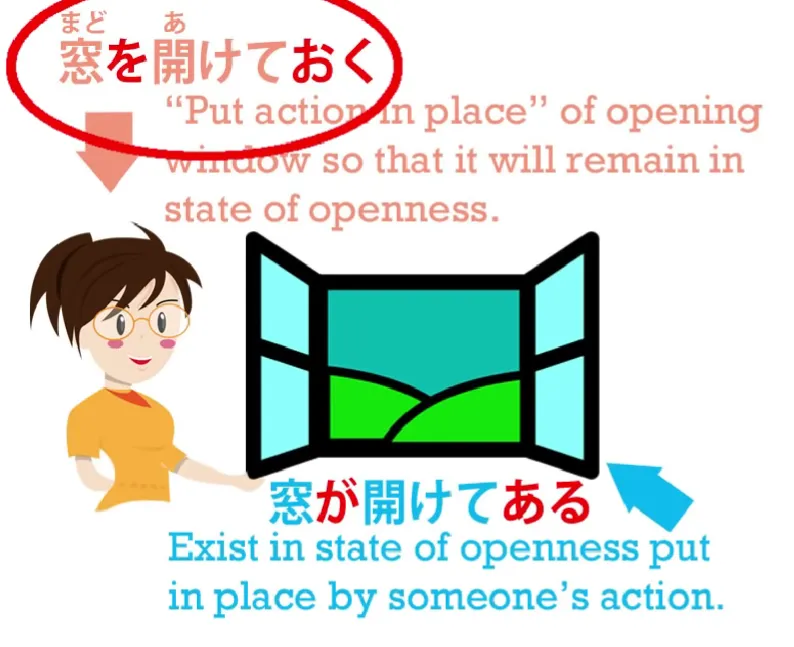てある・ている
What about -てある? ある also means be, so the meaning is in fact very similar. It also means to be-in-a-state of that verb. Chúng ta sẽ lấy hai câu ví dụ: 窓が開い**ている** và 窓が開け**てある**.
Ở ví dụ đầu tiên, cái 窓が開いている có nghĩa là cửa sổ đang mở, đúng theo nghĩa đen luôn, đang tồn tại ở trạng thái mở -> So 開く (the one up) means be open yourself, whatever you are, a box or whatever; 開ける (the one down) means open the box, open the door etc.
 Nhưng còn
Nhưng còn 窓が開け**てある** (we are using the other-move version of 開く, which is 開ける (bottom one)) -> it was open because somebody else opened it:
- Dùng dạng tha động từ (other-move) của động từ
- Dùng ある thay vì いる.
 Cái đầu tiên để chỉ là "bản thân nó mở" (the window was open – we're not implying that anybody opened the window). Còn cái thứ hai thì không, nhưng the window is doing the action, which is
Cái đầu tiên để chỉ là "bản thân nó mở" (the window was open – we're not implying that anybody opened the window). Còn cái thứ hai thì không, nhưng the window is doing the action, which is ある: the window is existing in a state of having been opened by somebody else.
ておく
-ておく means to put the action in place.
So you're placing the action, you're putting it into place, you're setting it up. And that's why it tends to have the secondary meaning of do in advance or do for another purpose, because you are setting up that action and the implication is that you want the effect of that action to remain in place for whatever future purposes it may have.

窓を開けておく – open a window so that it will stand open for the future, so that it will then be open, put into place the action of opening the window
The -ておく here doesn't mean do it for a purpose, it doesn't mean do it in advance. It means do the action and leave its results in place/put the action in place and leave it in effect. Similarly, people say, It's all right to leave a baby to cry sometimes – 泣かせ**ておく**